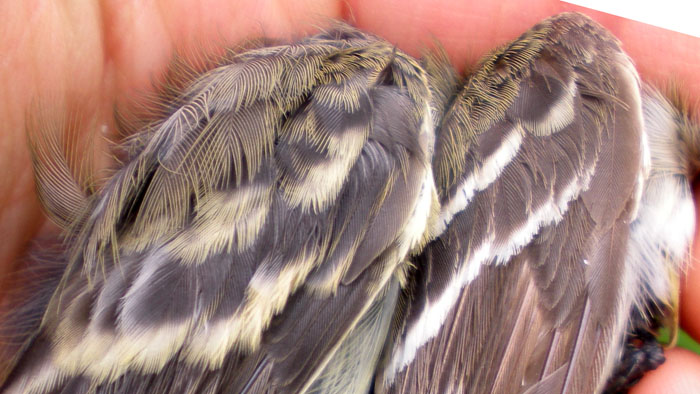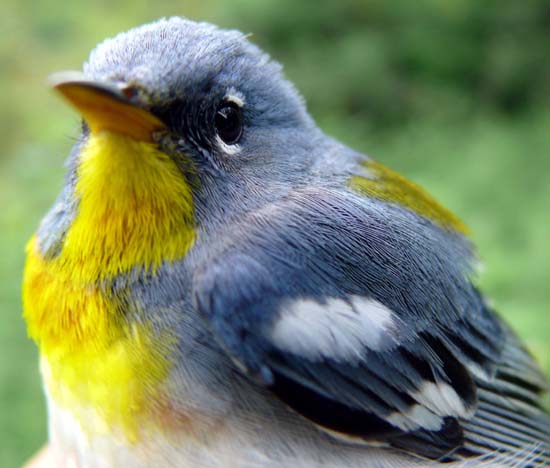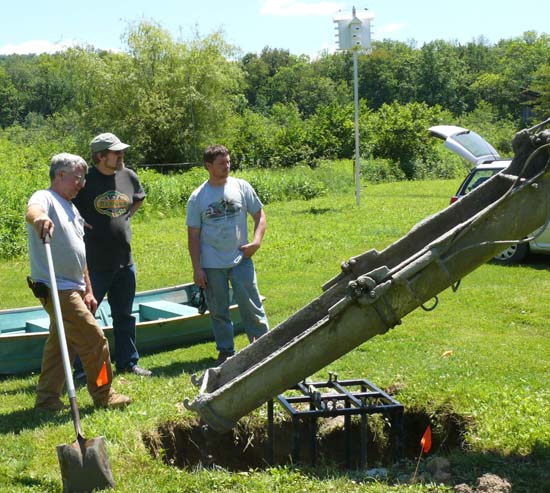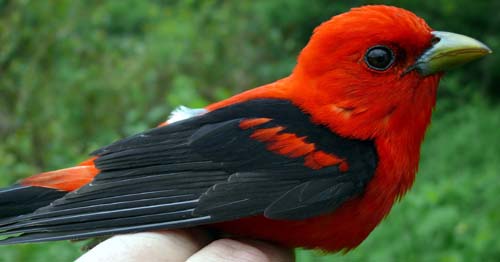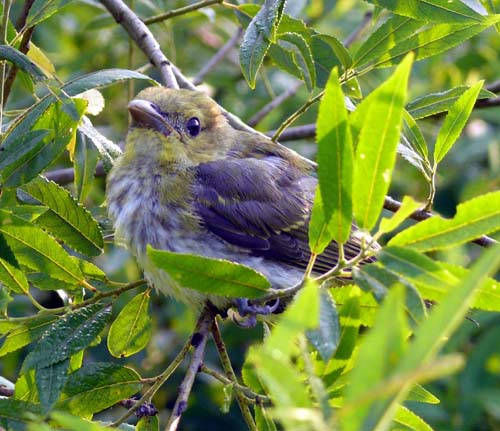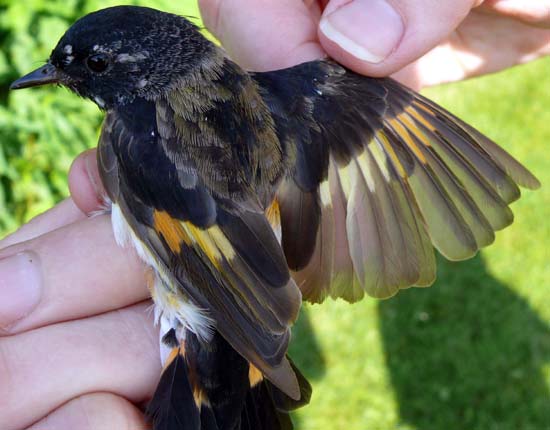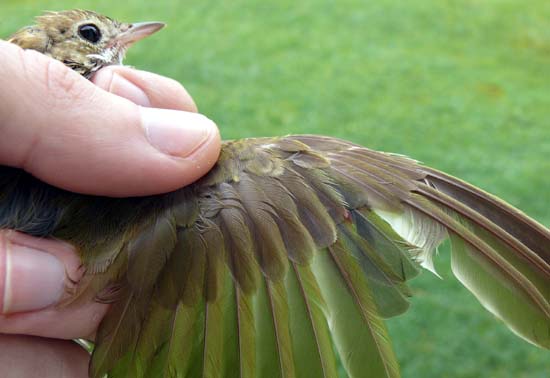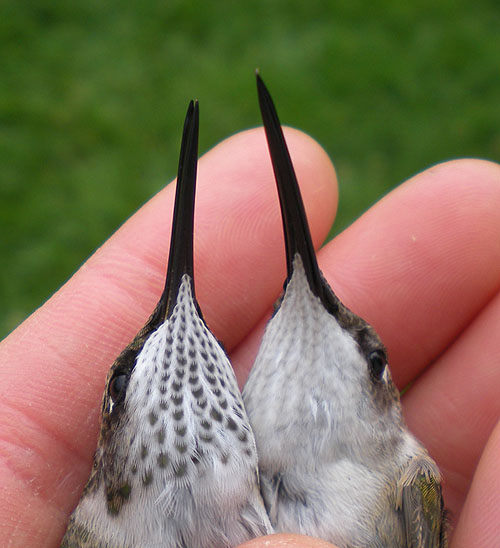
For both
the male and female ruby-throats, HY individuals have bill corrugations
and buffy edging on their crown feathers. Be careful, though, as these
buffy tips can wear off.
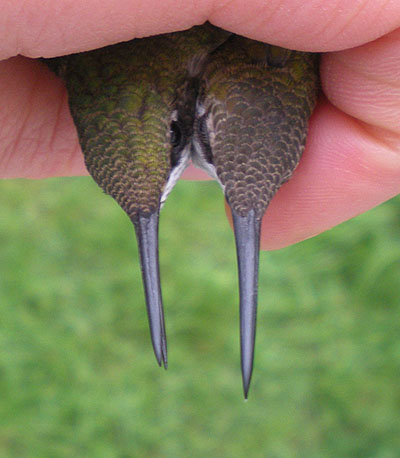
Empidonax
flycatchers are one of the first passerines to depart for their wintering
grounds, and we begin regularily capturing migrating birds by the
end of July. The two birds in the photo below are both least flycatchers,
and they were identified by their small size, white throat, and emargination
of their sixth primary. The bird on the left was identified as a HY
by the broad buffy wingbars, and the bird on the right as an AHY individual
with worn, white tipping on the median and outer greater coverts and
worn flight feathers. Unlike the majority of North American migratory
songbirds where adults undergo a complete prebasic molt on the breeding
ground, in this species (and some other empids), the adult pre-basic
molt (complete) primarily occurs on the wintering ground. The molt
limit created from the prealternate molt is noticeable in the adult
bird (right).
